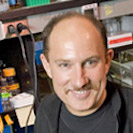Our central hypothesis is that by employing a structural biological approach using both crystallography and NMR spectroscopy, we will define novel targetable fungalspecific areas in the calcineurin complex critical for fungal pathogenesis. Based on our successful ongoing work with Candida albicans and Aspergillus fumigatus, we now propose to maximize clinical breadth by expanding to study Cryptococcus neoformans/gattii, Candida glabrata, and Mucor circinelloides.
Our goals will be accomplished with the broad expertise of the Project 1 team, which includes mycologists, structural biologists, and medicinal chemistry expertise. Drs. Heitman and Steinbach laid the foundation for the molecular pathogenesis and antifungal aspects of calcineurin in the major fungal pathogens. Dr. Schumacher has solved over 200 crystal structures, elucidating mechanisms in transcription, DNA segregation, cell division, and signalling. Dr. Spicer developed deuteration techniques that enabled NMR structure determination of larger proteins and protein assemblies, including solving the structure of the immunogenic MPER trimer domain of the HIV-1 envelope protein gp41. Finally, we will expand our successful medicinal chemistry collaborations with Amplyx Pharmaceuticals, Scynexis, and Novartis to support inhibitor development.
Specific Aims
- Solve crystal structures of the calcineurin complex from three major pathogenic fungi and characterize calcineurin complex dynamics by ultra-high field NMR. We hypothesize that the crystal structures of the calcineurin A/B complex, coupled with calmodulin and the immunophilin complexes (cyclophilin A-CsA and FKBP12-FK506), will reveal novel fungal-specific calcineurin determinants that can be exploited for targeted inhibitor development. We recently solved the structures of both the C. albicans and A. fumigatus calcineurin AB-FK506-FKBP12 quaternary complexes. We will now solve the structures of the C. glabrata, C. neoformans, and M. circinelloides calcineurin heterodimer alone and complexed with calmodulin, FKBP12-FK506 (or FK506 analogs), and cyclophilin A-CsA (or CsA analogs). Structures of complexes that resist crystallization, as well as dynamics of enzyme/inhibitor complexes, will be characterized by NMR. Predicted inhibitor binding sites will be probed by NMR titration to map interactions.
- Validate fungal-specific FK506/CsA-binding residues using targeted mutagenesis. We hypothesize that crystal and NMR structure domains can be validated as molecular targets through genetic and biochemical analyses. We will utilize site-directed mutagenesis of the key contacts and surface residues on calcineurin A and B, cyclophilin A, and FKBP12 in each of the three major fungi to examine structural stability, fungal growth phenotype, calcineurin enzymatic activity, and inhibition.
- Generate non-immunosuppressive fungal-specific calcineurin inhibitors with antifungal activity. We have documented that we can generate analogs of FK506 that inhibit fungal calcineurin without crossreactivity to human calcineurin. We will now screen existing libraries of CsA analogs (Novartis, Scynexis) and FK506 analogs available and in production (Amplyx Pharmaceuticals) to provide the structural basis to pursue structure-guided chemical and biosynthetic modifications. This will permit the production of second generation inhibitors optimized for retention of antifungal activity and abrogation of immunosuppression by capitalizing on the unique structural differences between the host and fungal enzymes. Medicinal chemistry and inhibitor docking experiments will be conducted to alter analogs based on screening results.
Impact
This work represents a major therapeutic advance for unmet global clinical health needs. We will capitalize on structural biology as a new approach to targeting calcineurin by defining fungal-specific features with no human counterpart to exploit as novel targets. Indeed, proof-of-principle compounds have been already generated. Because calcineurin inhibitors are synergistic with other antifungals and inhibitors, this Project shares goals with Projects 2 (Ras) and 3 (Trehalose), holding promise for novel combination therapies.


